Central Park
Central Park is an urban park between the Upper West Side and Upper East Side neighborhoods of Manhattan in New York City that was the first landscaped park in the United States. It is the sixth-largest park in the city, containing 843 acres (341 ha), and the most visited urban park in the United States, with an estimated 42 million visitors annually as of 2016.
The creation of a large park in Manhattan was first proposed in the 1840s, and a 778-acre (315 ha) park approved in 1853. In 1857, landscape architects Frederick Law Olmsted and Calvert Vaux won a design competition for the park with their "Greensward Plan". Construction began the same year; existing structures, including a majority-Black settlement named Seneca Village, were seized through eminent domain and razed. The park's first areas were opened to the public in late 1858. Additional land at the northern end of Central Park was purchased in 1859, and the park was completed in...Read more
Central Park is an urban park between the Upper West Side and Upper East Side neighborhoods of Manhattan in New York City that was the first landscaped park in the United States. It is the sixth-largest park in the city, containing 843 acres (341 ha), and the most visited urban park in the United States, with an estimated 42 million visitors annually as of 2016.
The creation of a large park in Manhattan was first proposed in the 1840s, and a 778-acre (315 ha) park approved in 1853. In 1857, landscape architects Frederick Law Olmsted and Calvert Vaux won a design competition for the park with their "Greensward Plan". Construction began the same year; existing structures, including a majority-Black settlement named Seneca Village, were seized through eminent domain and razed. The park's first areas were opened to the public in late 1858. Additional land at the northern end of Central Park was purchased in 1859, and the park was completed in 1876. After a period of decline in the early 20th century, New York City parks commissioner Robert Moses started a program to clean up Central Park in the 1930s. The Central Park Conservancy, created in 1980 to combat further deterioration in the late 20th century, refurbished many parts of the park starting in the 1980s.
Main attractions include landscapes such as the Ramble and Lake, Hallett Nature Sanctuary, the Jacqueline Kennedy Onassis Reservoir, and Sheep Meadow; amusement attractions such as Wollman Rink, Central Park Carousel, and the Central Park Zoo; formal spaces such as the Central Park Mall and Bethesda Terrace; and the Delacorte Theater. The biologically diverse ecosystem has several hundred species of flora and fauna. Recreational activities include carriage-horse and bicycle tours, bicycling, sports facilities, and concerts and events such as Shakespeare in the Park. Central Park is traversed by a system of roads and walkways and is served by public transportation.
Its size and cultural position make it a model for the world's urban parks. Its influence earned Central Park the designations of National Historic Landmark in 1963 and of New York City scenic landmark in 1974. Central Park is owned by the New York City Department of Parks and Recreation but has been managed by the Central Park Conservancy since 1998, under a contract with the municipal government in a public–private partnership. The Conservancy, a non-profit organization, raises Central Park's annual operating budget and is responsible for all basic care of the park.
 Randel's surveying boltPlanning
Randel's surveying boltPlanning
Between 1821 and 1855, New York City's population nearly quadrupled. As the city expanded northward up Manhattan, people were drawn to the few existing open spaces, mainly cemeteries, for passive recreation. These were seen as escapes from the noise and chaotic life in the city, which at the time was almost entirely centered on Lower Manhattan.[1] The Commissioners' Plan of 1811, the outline for Manhattan's modern street grid, included several smaller open spaces but not Central Park.[2] As such, John Randel Jr. had surveyed the grounds for the construction of intersections within the modern-day park site. The only remaining surveying bolt from his survey is embedded in a rock north of the present Dairy and the 66th Street transverse, marking the location where West 65th Street would have intersected Sixth Avenue.[3][4]
Site Map of the former Seneca Village from Viele's survey for Central Park
Map of the former Seneca Village from Viele's survey for Central ParkBy the 1840s, members of the city's elite were publicly calling for the construction of a new large park in Manhattan.[1][5] At the time, Manhattan's seventeen squares comprised a combined 165 acres (67 ha) of land, the largest of which was the 10-acre (4 ha) Battery Park at Manhattan island's southern tip.[6] These plans were endorsed in 1844 by New York Evening Post editor William Cullen Bryant, and in 1851 by Andrew Jackson Downing, one of the first American landscape designers.[5][7][8]
Mayor Ambrose Kingsland, in a message to the New York City Common Council on May 5, 1851, set forth the necessity and benefits of a large new park and proposed the council move to create such a park. Kingsland's proposal was referred to the council's Committee of Lands, which endorsed the proposal. The committee chose Jones's Wood, a 160-acre (65 ha) tract of land between 66th and 75th streets on the Upper East Side, as the park's site, as Bryant had advocated for Jones Wood. The acquisition was controversial because of its location, small size relative to other potential uptown tracts, and cost.[9][10][11] A bill to acquire Jones's Wood was invalidated as unconstitutional,[12][13] so attention turned to a second site: a 750-acre (300 ha) area known as "Central Park", bounded by 59th and 106th streets between Fifth and Eighth avenues.[12][14] Croton Aqueduct Board president Nicholas Dean, who proposed the Central Park site, chose it because the Croton Aqueduct's 35-acre (14 ha), 150-million-US-gallon (570×10^6 L) collecting reservoir would be in the geographical center.[12][14] In July 1853, the New York State Legislature passed the Central Park Act, authorizing the purchase of the present-day site of Central Park.[15][16]
The board of land commissioners conducted property assessments on more than 34,000 lots in the area,[17] completing them by July 1855.[18] While the assessments were ongoing, proposals to downsize the plans were vetoed by mayor Fernando Wood.[18][19][20] At the time, the site was occupied by free black people and Irish immigrants who had developed a property-owning community there since 1825.[21][22] Most of the Central Park site's residents lived in small villages, such as Pigtown;[23][24] Seneca Village;[25] or in the school and convent at Mount St. Vincent's Academy.[26] Clearing began shortly after the land commission's report was released in October 1855,[17][27] and approximately 1,600 residents were evicted under eminent domain.[25][28][29] Though supporters claimed that the park would cost just $1.7 million,[30] the total cost of the land ended up being $7.39 million (equivalent to $232 million in 2022), more than the price that the United States would pay for Alaska a few years later.[31][32][33]
Design contestIn June 1856, Fernando Wood appointed a "consulting board" of seven people, headed by author Washington Irving, to inspire public confidence in the proposed development.[34][35] Wood hired military engineer Egbert Ludovicus Viele as the park's chief engineer, tasking him with a topographical survey of the site.[36][37][38] The following April, the state legislature passed a bill to authorize the appointment of four Democratic and seven Republican commissioners,[34][39] who had exclusive control over the planning and construction process.[40][41][42] Though Viele had already devised a plan for the park,[43] the commissioners disregarded it and retained him to complete only the topographical surveys.[44][45] The Central Park Commission began hosting a landscape design contest shortly after its creation.[45][46][47] The commission specified that each entry contain extremely detailed specifications, as mandated by the consulting board.[47][48][49] Thirty-three firms or organizations submitted plans.[47][48]
In April 1858, the park commissioners selected Frederick Law Olmsted and Calvert Vaux's "Greensward Plan" as the winning design.[50][51][52] Three other plans were designated as runners-up and featured in a city exhibit.[51][53] Unlike many of the other designs, which effectively integrated Central Park with the surrounding city, Olmsted and Vaux's proposal introduced clear separations with sunken transverse roadways.[54][55] The plan eschewed symmetry, instead opting for a more picturesque design.[54][56] It was influenced by the pastoral ideals of landscaped cemeteries such as Mount Auburn in Cambridge, Massachusetts, and Green-Wood in Brooklyn.[55][57] The design was also inspired by Olmsted's 1850 visit to Birkenhead Park in Birkenhead, England,[58] which is generally acknowledged as the first publicly funded civil park in the world.[59][60][61] According to Olmsted, the park was "of great importance as the first real Park made in this country—a democratic development of the highest significance".[56][62]
ConstructionConstruction of Central Park's design was executed by a gamut of professionals. Frederick Law Olmsted and Calvert Vaux were the primary designers, assisted by board member Andrew Haswell Green, architect Jacob Wrey Mould, master gardener Ignaz Anton Pilat, and engineer George E. Waring Jr.[63][64] Olmsted was responsible for the overall plan, while Vaux designed some of the finer details. Mould, who worked frequently with Vaux, designed the Central Park Esplanade and the Tavern on the Green building.[65] Pilat was the park's chief landscape architect, whose primary responsibility was the importation and placement of plants within the park.[65][66] A "corps" of construction engineers and foremen, managed by superintending engineer William H. Grant, were tasked with the measuring and constructing architectural features such as paths, roads, and buildings.[67][68] Waring was one of the engineers working under Grant's leadership and was in charge of land drainage.[69][70]
Central Park was difficult to construct because of the generally rocky and swampy landscape.[71] Around five million cubic feet (140,000 m3) of soil and rocks had to be transported out of the park, and more gunpowder was used to clear the area than was used at the Battle of Gettysburg during the American Civil War.[72] More than 18,500 cubic yards (14,100 m3) of topsoil were transported from Long Island and New Jersey, because the original soil was neither fertile nor sufficiently substantial to sustain the flora specified in the Greensward Plan.[71][72] Modern steam-powered equipment and custom tree-moving machines augmented the work of unskilled laborers.[72] In total, over 20,000 individuals helped construct Central Park.[72] Because of extreme precautions taken to minimize collateral damage, five laborers died during the project, at a time when fatality rates were generally much higher.[73]
During the development of Central Park, Superintendent Olmsted hired several dozen mounted police officers, who were classified into two types of "keepers": park keepers and gate keepers.[71][74][75] The mounted police were viewed favorably by park patrons and were later incorporated into a permanent patrol.[71] The regulations were sometimes strict.[75] For instance, prohibited actions included games of chance, speech-making, large congregations such as picnics, or picking flowers or other parts of plants.[75][76][77] These ordinances were effective: by 1866, there had been nearly eight million visits and only 110 arrests in the park's history.[78]
Late 1850s The Lake, one of the first features of Central Park to be completed
The Lake, one of the first features of Central Park to be completedIn late August 1857, workers began building fences, clearing vegetation, draining the land, and leveling uneven terrain.[79][80] By the following month, chief engineer Viele reported that the project employed nearly 700 workers.[80] Olmsted employed workers using day labor, hiring men directly without any contracts and paying them by the day.[67] Many of the laborers were Irish immigrants or first-or-second generation Irish Americans, and some Germans and Italians;[81] there were no black or female laborers.[82][83] The workers were often underpaid,[83][84] and workers would often take jobs at other construction projects to supplement their income.[85] A pattern of seasonal hiring was established, wherein more workers would be hired and paid at higher rates during the summers.[83]
For several months, the park commissioners faced funding issues,[41][86] and a dedicated workforce and funding stream was not secured until June 1858.[41] The landscaped Upper Reservoir was the only part of the park that the commissioners were not responsible for constructing; instead, the Reservoir would be built by the Croton Aqueduct board. Work on the Reservoir started in April 1858.[87] The first major work in Central Park involved grading the driveways and draining the land in the park's southern section.[88][89] The Lake in Central Park's southwestern section was the first feature to open to the public, in December 1858,[90] followed by the Ramble in June 1859.[73][91] The same year, the New York State Legislature authorized the purchase of an additional 65 acres (26 ha) at the northern end of Central Park, from 106th to 110th Streets.[90][92] The section of Central Park south of 79th Street was mostly completed by 1860.[93]
The park commissioners reported in June 1860 that $4 million had been spent on the construction to date.[94] As a result of the sharply rising construction costs, the commissioners eliminated or downsized several features in the Greensward Plan.[95] Based on claims of cost mismanagement, the New York State Senate commissioned the Swiss engineer Julius Kellersberger to write a report on the park.[96] Kellersberger's report, submitted in 1861, stated that the commission's management of the park was a "triumphant success".[97][98]
1860s Bethesda Terrace and Fountain under construction in 1862
Bethesda Terrace and Fountain under construction in 1862Olmsted often clashed with the park commissioners, notably with Chief Commissioner Green.[95][99] Olmsted resigned in June 1862, and Green was appointed to Olmsted's position.[100][101] Vaux resigned in 1863 because of what he saw as pressure from Green.[102] As superintendent of the park, Green accelerated construction, though having little experience in architecture.[100] He implemented a style of micromanagement, keeping records of the smallest transactions in an effort to reduce costs.[99][103] Green finalized the negotiations to purchase the northernmost 65 acres (26 ha) of the park which was later converted into a "rugged" woodland and the Harlem Meer waterway.[100][103]
When the American Civil War began in 1861, the park commissioners decided to continue building Central Park, since significant parts of the park had already been completed.[104] Only three major structures were completed during the Civil War: the Music Stand and the Casino restaurant, both later demolished, and the Bethesda Terrace and Fountain.[105] By late 1861, the park south of 72nd Street had been completed, except for various fences.[106] Work had begun on the northern section of the park but was complicated by a need to preserve the historic McGowan's Pass.[107] The Upper Reservoir was completed the following year.[108]
During this period Central Park began to gain popularity.[104] One of the main attractions was the "Carriage Parade", a daily display of horse-drawn carriages that traversed the park.[104][109][110] Park patronage grew steadily: by 1867, Central Park accommodated nearly three million pedestrians, 85,000 horses, and 1.38 million vehicles annually.[104] The park had activities for New Yorkers of all social classes. While the wealthy could ride horses on bridle paths or travel in horse-drawn carriages, almost everyone was able to participate in sports such as ice-skating or rowing, or listen to concerts at the Mall's bandstand.[111]
Olmsted and Vaux were re-hired in mid-1865.[112] Several structures were erected, including the Children's District, the Ballplayers House, and the Dairy in the southern part of Central Park. Construction commenced on Belvedere Castle, Harlem Meer, and structures on Conservatory Water and the Lake.[105][113]
1870–1876: completion Gentry in the new park, c. 1870
Gentry in the new park, c. 1870The Tammany Hall political machine, which was the largest political force in New York at the time, was in control of Central Park for a brief period beginning in April 1870.[114] A new charter created by Tammany boss William M. Tweed abolished the old 11-member commission and replaced it with one with five men composed of Green and four other Tammany-connected figures.[114][115] Subsequently, Olmsted and Vaux resigned again from the project in November 1870.[114] After Tweed's embezzlement was publicly revealed in 1871, leading to his imprisonment, Olmsted and Vaux were re-hired, and the Central Park Commission appointed new members who were mostly in favor of Olmsted.[116]
One of the areas that remained relatively untouched was the underdeveloped western side of Central Park, though some large structures would be erected in the park's remaining empty plots.[117] By 1872, Manhattan Square had been reserved for the American Museum of Natural History, founded three years before at the Arsenal. A corresponding area on the East Side, originally intended as a playground, would later become the Metropolitan Museum of Art.[117][118] In the final years of Central Park's construction, Vaux and Mould designed several structures for Central Park. The park's sheepfold (now Tavern on the Green) and Ladies' Meadow were designed by Mould in 1870–1871, followed by the administrative offices on the 86th Street transverse in 1872.[119] Even though Olmsted and Vaux's partnership was dissolved by the end of 1872,[120] the park was not officially completed until 1876.[121]
Late 19th and early 20th centuries: first decline Belvedere Castle, completed 1869
Belvedere Castle, completed 1869 Lower end of the mall, seen in 1901
Lower end of the mall, seen in 1901By the 1870s, the park's patrons increasingly came to include the middle and working class, and strict regulations were gradually eased, such as those against public gatherings.[122] Because of the heightened visitor count, neglect by the Tammany administration, and budget cuts demanded by taxpayers, the maintenance expenses for Central Park had reached a nadir by 1879.[76][123] Olmsted blamed politicians, real estate owners, and park workers for Central Park's decline, though high maintenance costs were also a factor.[124] By the 1890s, the park faced several challenges: cars were becoming commonplace, and with the proliferation of amusements and refreshment stands, people were beginning to see the park as a recreational attraction.[125][126] The 1904 opening of the New York City Subway displaced Central Park as the city's predominant leisure destination, as New Yorkers could travel to farther destinations such as Coney Island beaches or Broadway theaters for a five-cent fare.[127]
In the late 19th century the landscape architect Samuel Parsons took the position of New York City parks superintendent. A onetime apprentice of Calvert Vaux,[128] Parsons helped restore the nurseries of Central Park in 1886.[129] Parsons closely followed Olmsted's original vision for the park, restoring Central Park's trees while blocking the placement of several large statues in the park.[130] Under Parsons' leadership, two circles (now Duke Ellington and Frederick Douglass Circles) were constructed at the northern corners of the park.[131][132] He was removed in May 1911 following a lengthy dispute over whether an expense to replace the soil in the park was unnecessary.[130][133] A succession of Tammany-affiliated Democratic mayors were indifferent toward Central Park.[134]
Several park advocacy groups were formed in the early 20th century. To preserve the park's character, the citywide Parks and Playground Association, and a consortium of multiple Central Park civic groups operating under the Parks Conservation Association, were formed in the 1900s and 1910s.[135] These associations advocated against such changes to the park as the construction of a library,[136] sports stadium,[137] a cultural center,[138] and an underground parking lot.[139] A third group, the Central Park Association, was created in 1926.[135] The Central Park Association and the Parks and Playgrounds Association were merged into the Park Association of New York City two years later.[140]
The Heckscher Playground—named after philanthropist August Heckscher, who donated the play equipment—opened near its southern end in 1926,[141][142] and quickly became popular with poor immigrant families.[142] The following year, Mayor Jimmy Walker commissioned landscape designer Hermann W. Merkel to create a plan to improve Central Park.[134] Merkel's plans would combat vandalism and plant destruction, rehabilitate paths, and add eight new playgrounds, at a cost of $1 million.[143][144] One of the suggested modifications, underground irrigation pipes, were installed soon after Merkel's report was submitted.[134][145] The other improvements outlined in the report, such as fences to mitigate plant destruction, were postponed due to the Great Depression.[146]
1930s to 1950s: Moses rehabilitationIn 1934, Republican Fiorello La Guardia was elected mayor of New York City. He unified the five park-related departments then in existence. Newly appointed city parks commissioner Robert Moses was given the task of cleaning up the park, and he summarily fired many of the Tammany-era staff.[147] At the time, the lawns were filled with weeds and dust patches, while many trees were dying or already dead. Monuments had been vandalized, equipment and walkways were broken, and ironwork was rusted.[147][148] Moses's biographer Robert Caro later said, "The once beautiful Mall looked like a scene of a wild party the morning after. Benches lay on their backs, their legs jabbing at the sky..."[148]
During the following year, the city's parks department replanted lawns and flowers, replaced dead trees and bushes, sandblasted walls, repaired roads and bridges, and restored statues.[149][150][151] The park menagerie was transformed into the modern Central Park Zoo, and a rat extermination program was instituted within the zoo.[150] Another dramatic change was Moses' removal of the "Hoover valley" shantytown at the north end of Turtle Pond, which became the 30-acre (12 ha) Great Lawn.[149][151] The western part of the Pond at the park's southeast corner became an ice skating rink called Wollman Rink,[150] roads were improved or widened,[152] and twenty-one playgrounds were added.[151] These projects used funds from the New Deal program, and donations from the public.[151] Moses removed Sheep Meadow's sheep to make way for the Tavern on the Green restaurant.[152][153]
Renovations in the 1940s and 1950s include a restoration of the Harlem Meer completed in 1943,[154] and a new boathouse completed in 1954.[155][156][157] Moses began construction on several other recreational features in Central Park, such as playgrounds and ball fields.[158] One of the more controversial projects proposed during this time was a 1956 dispute over a parking lot for Tavern in the Green. The controversy placed Moses, an urban planner known for displacing families for other large projects around the city, against a group of mothers who frequented a wooded hollow at the site of a parking lot.[158][159] Though opposed by the parents, Moses approved the destruction of part of the hollow. Demolition work commenced after Central Park was closed for the night and was only halted after the threat of a lawsuit.[158][160]
1960s and 1970s: "Events Era" and second declineMoses left his position in May 1960. No park commissioner since then has been able to exercise the same degree of power, nor did NYC Parks remain in as stable a position in the aftermath of his departure. Eight commissioners held the office in the twenty years following his departure.[161] The city experienced economic and social changes, with some residents moving to the suburbs.[162][163] Interest in Central Park's landscape had long since declined, and it was now mostly being used for recreation.[164] Several unrealized additions were proposed for Central Park in that decade, such as a public housing development,[165] a golf course,[166] and a "revolving world's fair".[167]
The 1960s marked the beginning of an "Events Era" in Central Park that reflected the widespread cultural and political trends of the period.[168] The Public Theater's annual Shakespeare in the Park festival was settled in the Delacorte Theater,[169] and summer performances were instituted on the Sheep Meadow and the Great Lawn by the New York Philharmonic Orchestra and the Metropolitan Opera.[170] During the late 1960s, the park became the venue for rallies and cultural events such as the "love-ins" and "be-ins" of the period.[171] The same year, Lasker Rink opened in the northern part of the park; the facility served as an ice rink in winter and Central Park's only swimming pool in summer.[172]
By the mid-1970s, managerial neglect resulted in a decline in park conditions. A 1973 report noted that the park suffered from severe erosion and tree decay, and that individual structures were being vandalized or neglected.[173] The Central Park Community Fund was subsequently created based on the recommendation of a report from a Columbia University professor.[174] The Fund then commissioned a study of the park's management and suggested the appointment of both a NYC Parks administrator and a board of citizens.[175] In 1979, Parks Commissioner Gordon Davis established the Office of Central Park Administrator and appointed Elizabeth Barlow, the executive director of the Central Park Task Force, to the position.[176][177] The Central Park Conservancy, a nonprofit organization with a citizen board, was founded the following year.[178][179]
1970s to 2000s: restoration

Under the leadership of the Central Park Conservancy, the park's reclamation began by addressing needs that could not be met within NYC Parks' existing resources. The Conservancy hired interns and a small restoration staff to reconstruct and repair unique rustic features, undertaking horticultural projects, and removing graffiti under the broken windows theory which advocated removing visible signs of decay.[180] The first structure to be renovated was the Dairy, which reopened as the park's first visitor center in 1979.[181] The Sheep Meadow, which reopened the following year, was the first landscape to be restored.[182] Bethesda Terrace and Fountain, the USS Maine National Monument, and the Bow Bridge were also rehabilitated.[183][184][185] By then, the Conservancy was engaged in design efforts and long-term restoration planning,[186] and in 1981, Davis and Barlow announced a 10-year, $100 million "Central Park Management and Restoration Plan".[185] The long-closed Belvedere Castle was renovated and reopened in 1983,[187][188] while the Central Park Zoo closed for a full reconstruction that year.[177][186] To reduce the maintenance effort, large gatherings such as free concerts were canceled.[189]
On completion of the planning stage in 1985, the Conservancy launched its first campaign[163] and mapped out a 15-year restoration plan.[190] Over the next several years, the campaign restored landmarks in the southern part of the park, such as Grand Army Plaza[191] and the police station at the 86th Street transverse;[192] while Conservatory Garden in the northeastern corner of the park was restored to a design by Lynden B. Miller.[193][194][195] Real estate developer Donald Trump renovated the Wollman Rink in 1987 after plans to renovate it were delayed repeatedly.[196] The following year, the Zoo reopened after a $35 million, four-year renovation.[197]
Work on the northern end of the park began in 1989.[198] A $51 million campaign, announced in 1993,[199] resulted in the restoration of bridle trails,[200] the Mall,[201] the Harlem Meer,[202] and the North Woods,[198] and the construction of the Dana Discovery Center on the Harlem Meer.[202] This was followed by the Conservancy's overhaul of the 55 acres (22 ha) near the Great Lawn and Turtle Pond, which was completed in 1997.[203] The Upper Reservoir was decommissioned as a part of the city's water supply system in 1993,[204][205] and was renamed after former U.S. first lady Jacqueline Kennedy Onassis the next year.[204][206] During the mid-1990s, the Conservancy hired additional volunteers and implemented a zone-based system of management throughout the park.[163] The Conservancy assumed much of the park's operations in early 1998.[207]
Renovations continued through the first decade of the 21st century, and a project to restore the pond was commenced in 2000.[208] Four years later, the Conservancy replaced a chain-link fence with a replica of the original cast-iron fence that surrounded the Upper Reservoir.[209] It started refurbishing the ceiling tiles of the Bethesda Arcade,[210] which was completed in 2007.[211] Soon after, the Central Park Conservancy began restoring the Ramble and Lake,[212] in a project that was completed in 2012.[213] Bank Rock Bridge was restored,[214][215] and the Gill, which empties into the lake, was reconstructed to approximate its dramatic original form.[216] The final feature to be restored was the East Meadow, which was rehabilitated in 2011.[217]
2010s to presentIn 2014, the New York City Council proposed a study on the viability of banning vehicular traffic from the park's drives.[218] The next year, mayor Bill de Blasio announced that West and East drives north of 72nd Street would be closed to vehicular traffic, because the city's data showed that closing the roads did not adversely impact traffic flows.[219] Subsequently, in June 2018, the remaining drives south of 72nd Street were closed to vehicular traffic.[220][221]
Several structures were renovated. Belvedere Castle was closed in 2018 for an extensive renovation, reopening in June 2019.[222][223][224] Later in 2018, it was announced that the Delacorte Theater would be closed from 2020 to 2022 for a $110 million rebuild.[225] The Central Park Conservancy further announced that Lasker Rink would be closed for a $150 million renovation[226] between 2021 and 2024.[227][228][229]
In March 2020, in response to the coronavirus pandemic, temporary field hospitals were set up within the park to treat overflow patients from area hospitals.[230][231] By mid-2023, the New York City government was considering erecting tents in Central Park to temporarily house asylum seekers. This move came after the federal government repealed an order authorizing Title 42 expulsions of migrants, which had been implemented during the COVID-19 pandemic.[232][233] A renovation of the Chess and Checkers House was completed in June 2023.[234]
• Strongin, Theodore (August 18, 1965). "Concert in Park Heard by 73,500". The New York Times. ISSN 0362-4331. Retrieved April 18, 2019.
• Wilson, John S. (June 18, 1967). "Barbra Streisand's Free Sing-In Jams Sheep Meadow in the Park". The New York Times. ISSN 0362-4331. Retrieved April 18, 2019. ^ Rosenzweig & Blackmar 1992, p. 489. ^ "Lindsay and Hoving Give New Skating Rink a Whirl". The New York Times. December 22, 1966. ISSN 0362-4331. Retrieved January 19, 2020. ^ Hudson, Edward (June 8, 1973). "Central Park Condition Decried". The New York Times. ISSN 0362-4331. Archived from the original on April 18, 2019. Retrieved April 18, 2019. ^ Gerston, Jill (November 20, 1974). "Central Park Called Badly Managed;". The New York Times. ISSN 0362-4331. Archived from the original on April 18, 2019. Retrieved April 18, 2019. ^ Maitland, Leslie (November 12, 1978). "Special Management Plan Urged To Combat Central Park's Decay". The New York Times. ISSN 0362-4331. Archived from the original on April 18, 2019. Retrieved April 18, 2019. ^ Dembart, Lee (February 28, 1979). "New Central Park Overseer". The New York Times. ISSN 0362-4331. Archived from the original on April 18, 2019. Retrieved April 18, 2019. ^ a b Slagle, Alton (February 6, 1983). "The Greening of Central Park". New York Daily News. pp. 7, 55 – via newspapers.com. ^ Glueck, Grace (December 14, 1980). "Mayor Koch Sets Up Conservancy for Central Park". The New York Times. ISSN 0362-4331. Archived from the original on April 18, 2019. Retrieved April 18, 2019. ^ "Central Park gets its own fund-raisers". New York Daily News. December 18, 1980. p. 181. Retrieved March 30, 2019 – via newspapers.com. ^ Larkin, Kathy (May 6, 1983). "Pruning Central Park". New York Daily News. p. 69. Retrieved March 30, 2019 – via newspapers.com. ^ "1870 Dairy In the Park Reopening". The New York Times. November 16, 1979. ISSN 0362-4331. Archived from the original on April 18, 2019. Retrieved April 18, 2019. ^ "Central Park's Sheep Meadow, Where the Grass Is Greener, Is Reopened". The New York Times. September 25, 1980. ISSN 0362-4331. Archived from the original on April 18, 2019. Retrieved April 18, 2019. ^ Murphy, Jean Parker; Ottavino, Kate Burns (1986). "The Rehabilitation of Bethesda Terrace: The Terrace Bridge and Landscape, Central Park, New York". APT Bulletin. 18 (3): 24–38. doi:10.2307/1494116. JSTOR 1494116. ^ Champe, Peter; Rabinowitz, Mark (1999). "Restoring the Minton Tile Ceiling, Bethesda Terrace Arcade, Central Park, New York City". APT Bulletin. 30 (2–3): 11–16. doi:10.2307/1504635. JSTOR 1504635. ^ a b Carmody, Deirdre (October 14, 1981). "10-Year Restoration Planned for Central Park". The New York Times. ISSN 0362-4331. Archived from the original on April 18, 2019. Retrieved April 18, 2019. ^ a b Carmody, Deirdre (October 13, 1984). "Central Park Renews Its Details and Vistas in a Burst of Repairs". The New York Times. ISSN 0362-4331. Archived from the original on April 18, 2019. Retrieved April 18, 2019. ^ Johnston, Laurie; Anderson, Susan Heller (September 21, 1983). "New York Day by Day; Crown for a Castle". The New York Times. ISSN 0362-4331. Archived from the original on April 18, 2019. Retrieved April 18, 2019. ^ La Rosa, Paul (September 22, 1983). "Thanks for the facelift". New York Daily News. p. 158. Retrieved March 30, 2019 – via newspapers.com. ^ Rosenzweig & Blackmar 1992, pp. 518–519. ^ Carmody, Deirdre (April 28, 1985). "The City Unveils a Blueprint for Renovating Central Park". The New York Times. ISSN 0362-4331. Archived from the original on April 18, 2019. Retrieved April 18, 2019. ^ Goldberger, Paul (June 28, 1990). "Review/Architecture; A Restored Grand Army Plaza, With a New Coat for the General". The New York Times. ISSN 0362-4331. Archived from the original on May 21, 2014. Retrieved April 14, 2010. ^ Gray, Christopher (September 4, 1988). "Streetscapes: The Central Park Stable; For a Police Station, Restoration of an 1870 Jewel". The New York Times. ISSN 0362-4331. Archived from the original on April 18, 2019. Retrieved April 18, 2019. ^ Kaufman, Joanne (October 20, 2009). "She Creates Urban Edens". Wall Street Journal. ISSN 0099-9660. Archived from the original on January 16, 2020. Retrieved January 16, 2020. ^ Lyall, Sarah (June 11, 1987). "Garden in Central Park Is Reborn After Neglect". The New York Times. ISSN 0362-4331. Archived from the original on April 18, 2019. Retrieved April 18, 2019. ^ Kinkead 1990, pp. 144–145. ^ Anderson, Susan Heller (October 15, 1987). "Trump to Run 2 Ice-Skating Rinks in Central Park". The New York Times. ISSN 0362-4331. Archived from the original on April 18, 2019. Retrieved April 18, 2019. ^ Faye Kaplan, Lisa (August 18, 1988). "The Zoo Crew". White Plains Journal-News. pp. 23, 24 – via newspapers.com. ^ a b Howe, Marvine (October 31, 1993). "Neighborhood Report: Central Park; A Rebirth For Upper Park". The New York Times. ISSN 0362-4331. Archived from the original on April 18, 2019. Retrieved April 18, 2019. ^ Gray, Christopher (May 16, 1993). "Streetscapes: Central Park; Restoration Recalls the 1930s Battle of the Ballfields". The New York Times. ISSN 0362-4331. Archived from the original on April 18, 2019. Retrieved April 18, 2019. ^ Gray, Christopher (January 2, 1994). "Streetscapes/Central Park's Bridle Paths; The Challenge of Restoring Long-Neglected Trails". The New York Times. ISSN 0362-4331. Archived from the original on April 18, 2019. Retrieved April 18, 2019. ^ Central Park Conservancy 2014, p. 22. ^ a b Kennedy, Shawn G. (May 9, 1993). "A Nature Center Blooms in Central Park Woodlands". The New York Times. ISSN 0362-4331. Archived from the original on April 18, 2019. Retrieved April 18, 2019. ^ Martin, Douglas (October 9, 1997). "City Emerald; Great Lawn Reopens. Will Its Fans Love It to Death?". The New York Times. ISSN 0362-4331. Archived from the original on April 18, 2019. Retrieved April 18, 2019. ^ a b Kadinsky 2016, p. 43. ^ Roberts, Sam (May 6, 1993). "131-Year-Old Reservoir Is Deemed Obsolete". The New York Times. ISSN 0362-4331. Archived from the original on June 12, 2018. Retrieved April 20, 2020. ^ Kifner, John (July 23, 1994). "Central Park Honor for Jacqueline Onassis". The New York Times. ISSN 0362-4331. Archived from the original on November 25, 2018. Retrieved April 20, 2020. ^ Martin, Douglas (February 12, 1998). "Private Group Signs Central Park Deal To Be Its Manager". The New York Times. ISSN 0362-4331. Archived from the original on April 18, 2019. Retrieved April 18, 2019. ^ Lee, Denny (September 3, 2000). "Neighborhood Report: Central Park; Fish Must Find New Homes As Pond Gets a Makeover". The New York Times. ISSN 0362-4331. Archived from the original on April 19, 2019. Retrieved April 19, 2019. ^ Gray, Christopher (June 20, 2004). "Streetscapes/The Central Park Reservoir; A Good Fence Makes The Neighbors Feel Good". The New York Times. ISSN 0362-4331. Archived from the original on April 19, 2019. Retrieved April 19, 2019. ^ Mooney, Jake (July 16, 2006). "Restoring Vaux's Vision, One Tile at a Time". The New York Times. ISSN 0362-4331. Archived from the original on April 19, 2019. Retrieved April 19, 2019. ^ "Central Park's Bethesda Terrace Arcade Reopens". New York City Department of Parks and Recreation. March 2, 2007. Archived from the original on November 1, 2013. Retrieved April 19, 2019. ^ Dunlap, David W. (July 18, 2008). "Behind the Dam, One Fierce Holdout". City Room. The New York Times Company. Archived from the original on April 19, 2019. Retrieved April 19, 2019. ^ Central Park Conservancy 2014, p. 56. ^ "Oak Bridge at Bank Rock Bay". Central Park Conservancy. Archived from the original on October 12, 2017. Retrieved October 12, 2017. ^ Lee, Jennifer 8. (September 30, 2009). "An Old Bridge, Reconstructed, Is Unveiled in Central Park". City Room. The New York Times Company. Archived from the original on April 19, 2019. Retrieved April 19, 2019.{{cite web}}: CS1 maint: numeric names: authors list (link) ^ "Central Park Conservancy Announces The Campaign For Central Park" (PDF). Central Park Conservancy. 2006. Archived from the original (PDF) on October 3, 2007. Retrieved April 20, 2019. ^ Foderaro, Lisa W. (September 20, 2011). "Conservancy Marks Milestone in Restoring Central Park". The New York Times. ISSN 0362-4331. Archived from the original on April 13, 2019. Retrieved April 13, 2019. ^ Dutes, Sheldon (October 8, 2014). "Cars May Be Banned From Central Park". NBC New York. Archived from the original on July 18, 2016. Retrieved September 12, 2019. ^ "Central Park, Prospect Park loops to be closed to traffic on weekdays". 7 Online. June 18, 2015. Archived from the original on July 1, 2015. Retrieved June 22, 2016. ^ Walker, Ameena (June 27, 2018). "At last, Central Park is permanently car-free". Curbed NY. Archived from the original on October 6, 2018. Retrieved October 6, 2018. ^ "Central Park goes car-free as traffic ban takes effect". WABC-TV. June 26, 2018. Archived from the original on October 6, 2018. Retrieved October 6, 2018. ^ "Central Park's Castle Gets a $12 Million Fairy-Tale Makeover". The New York Times. July 12, 2019. ISSN 0362-4331. Archived from the original on July 13, 2019. Retrieved July 1, 2019. ^ Rosenberg, Zoe (June 18, 2019). "Central Park's Belvedere Castle will reopen June 28". Curbed NY. Archived from the original on June 18, 2019. Retrieved June 19, 2019. ^ "Central Park's Belvedere Castle Reopening After Restoration". Gothamist. June 18, 2019. Archived from the original on June 18, 2019. Retrieved June 19, 2019. ^ Pogrebin, Robin (October 31, 2018). "A Restoration for Shakespeare's Home in Central Park". The New York Times. ISSN 0362-4331. Archived from the original on April 19, 2019. Retrieved April 19, 2019. ^ Durkin, Erin (July 18, 2018). "Central Park's Lasker pool and ice rink set for $150 million makeover". New York Daily News. Archived from the original on April 17, 2019. Retrieved April 17, 2019. ^ Barron, James (September 18, 2019). "$110 Million to Fix Central Park Section Far From 'Billionaire's Row'". The New York Times. Archived from the original on September 19, 2019. Retrieved September 19, 2019. ^ Cohen, Li Yakira (September 18, 2019). "Central Park's $150M redesign focuses on north end improvements". AM New York. Archived from the original on September 20, 2019. Retrieved September 19, 2019. ^ Glasser-Baker, Becca (September 18, 2019). "Central Park to get new, improved pool and ice-skating rink". Metro US. Archived from the original on September 26, 2019. Retrieved September 19, 2019. ^ "Tent hospital being constructed in New York City's Central Park". WCBS-TV. March 29, 2020. Retrieved March 30, 2020. ^ Holcombe, Madeline; Yan, Holly (March 30, 2020). "Central Park becomes a field hospital for New York, where coronavirus deaths have topped 1,000". CNN. Retrieved March 30, 2020. ^ Rubinstein, Dana (May 8, 2023). "Racetracks, Parks, Offices: A Frantic Search for Migrant Housing". The New York Times. ISSN 0362-4331. Retrieved May 12, 2023. ^ Gloria Pazmino, Samantha Beech (May 6, 2023). "New York City mayor announces plan to transport willing migrants to locations outside the city ahead of expected surge". CNN. Retrieved May 12, 2023. ^ Wassef, Mira (June 27, 2023). "Central Park's Chess and Checkers House gets makeover". PIX11. Retrieved June 28, 2023.


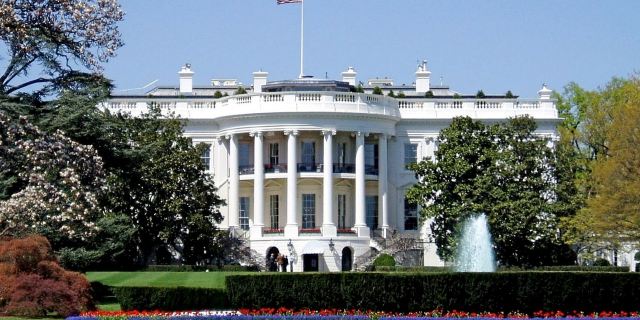

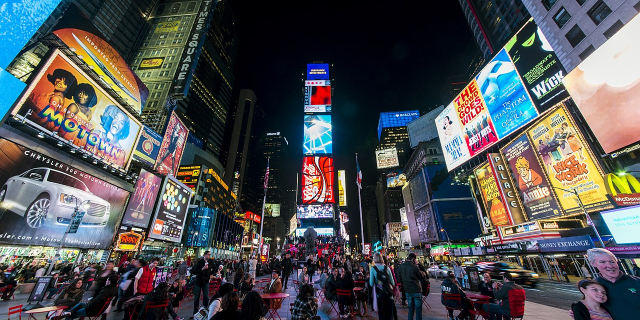



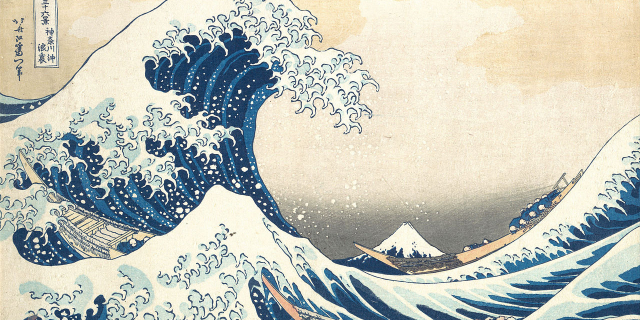




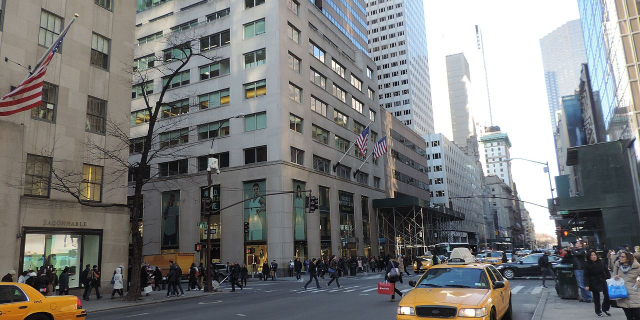

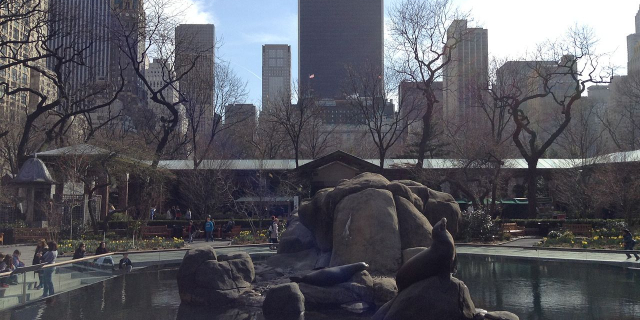
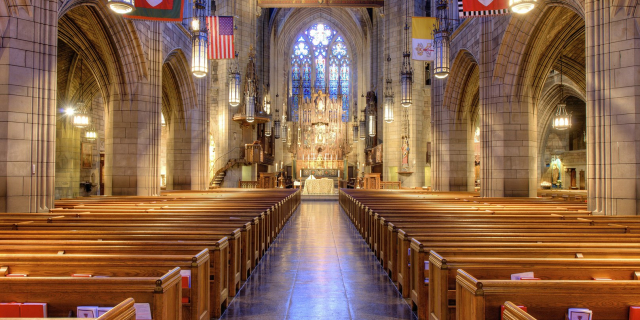




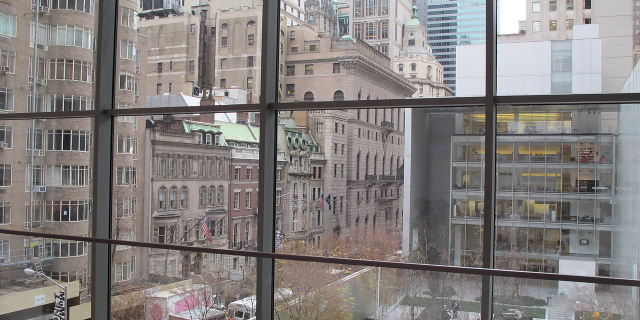
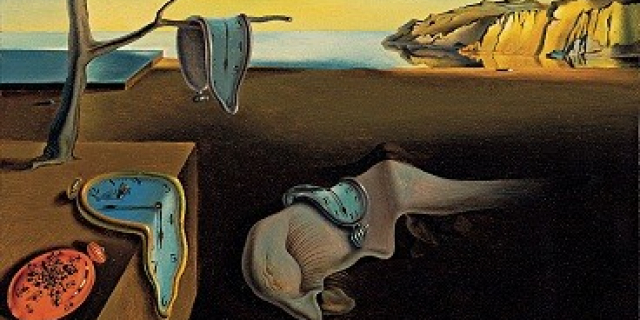




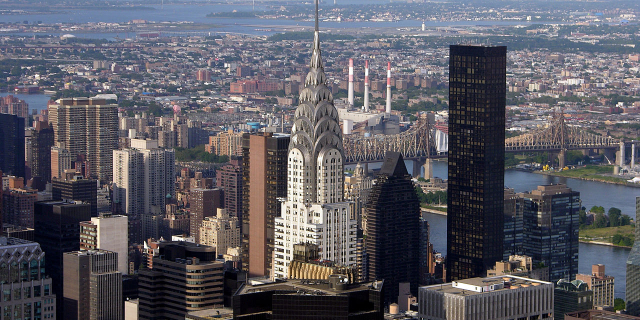
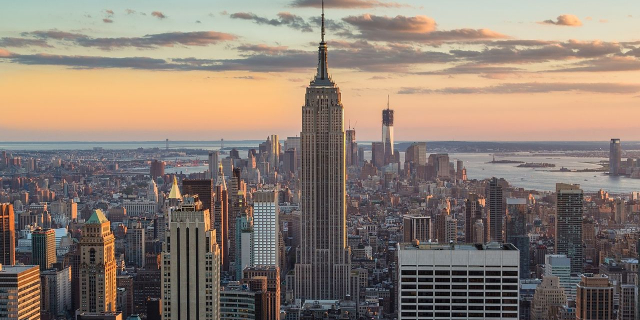



Add new comment